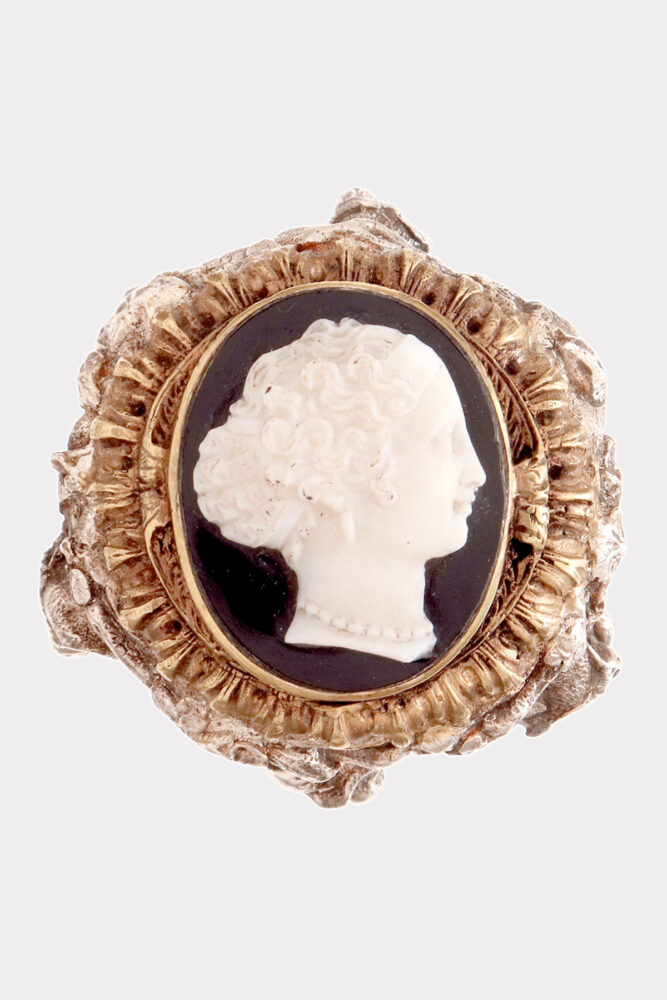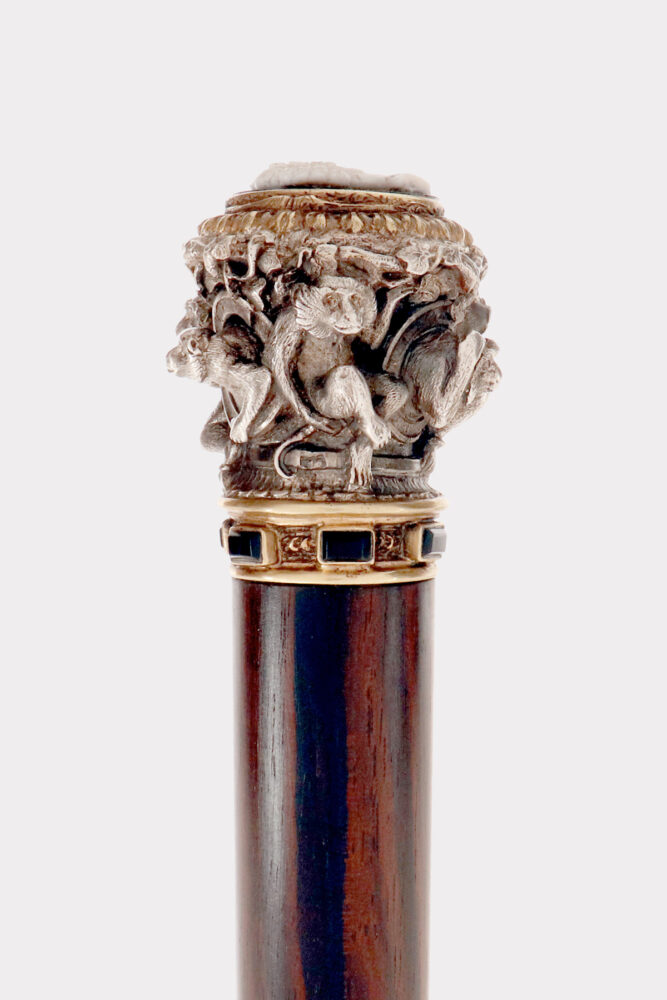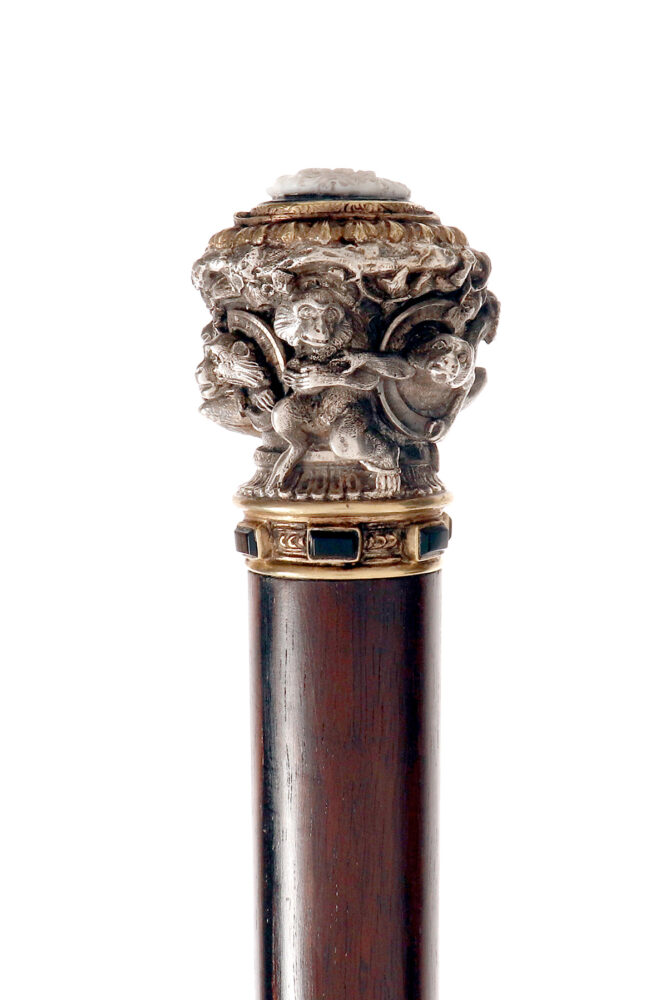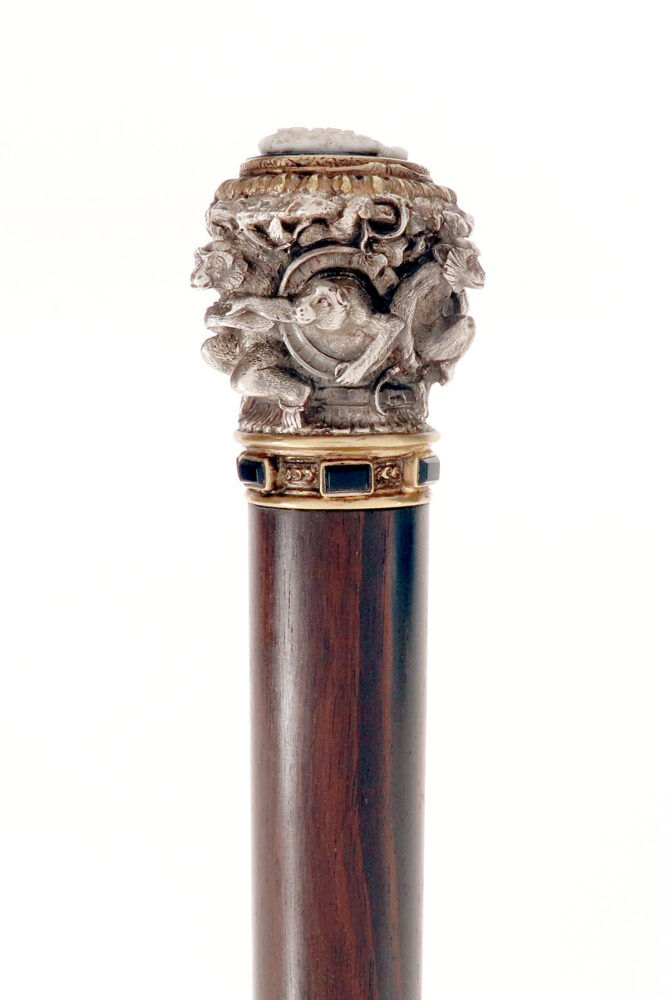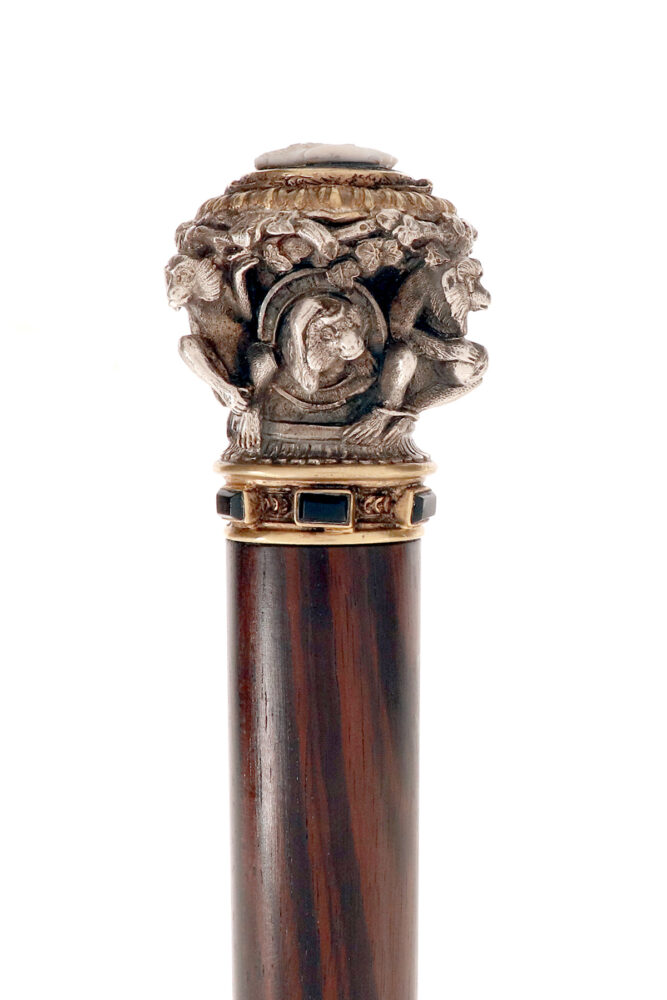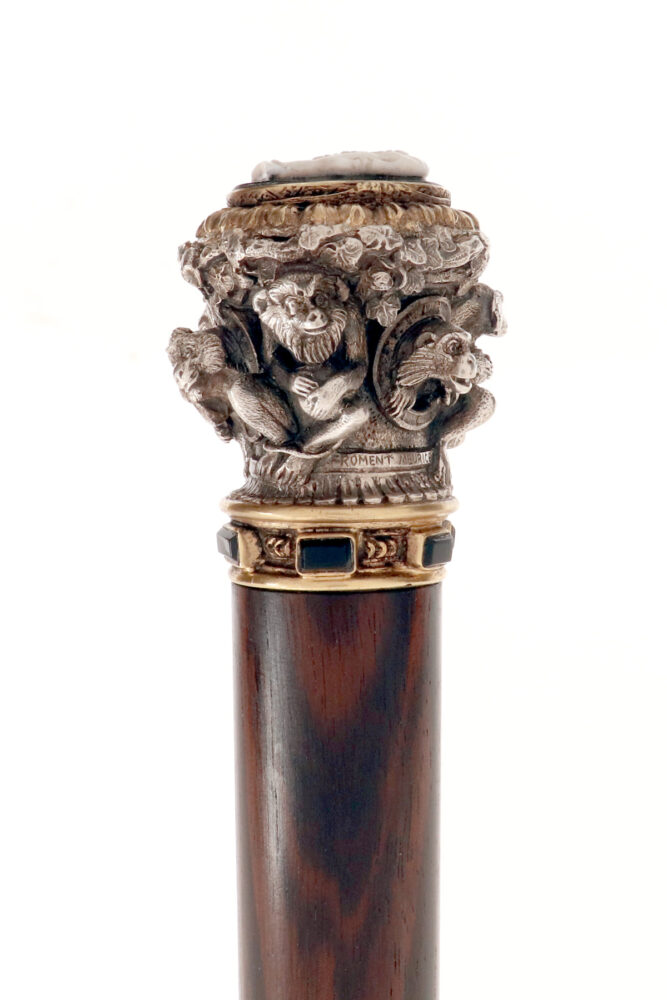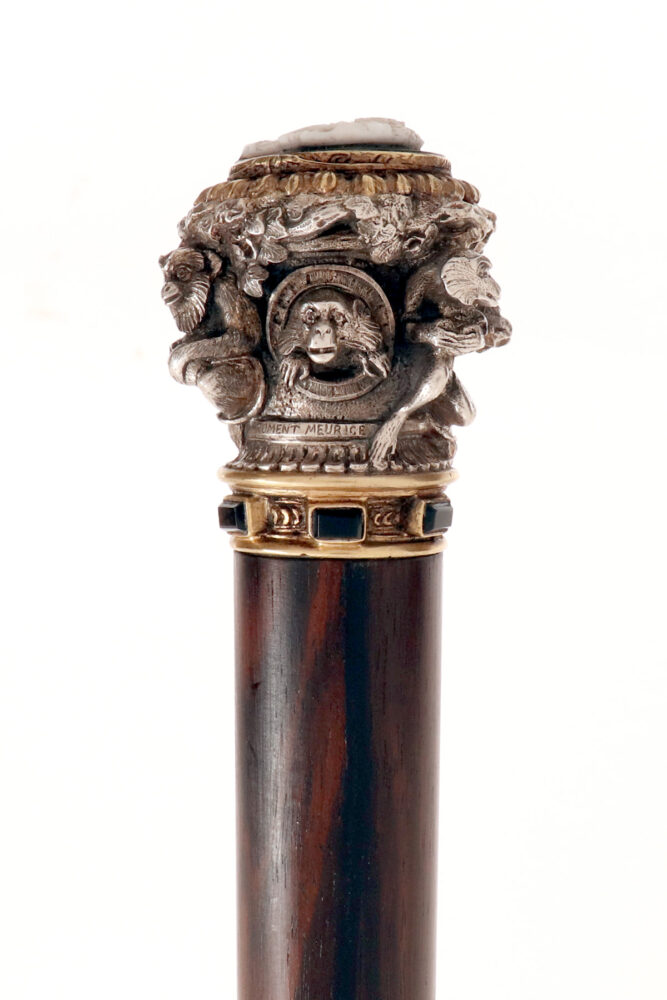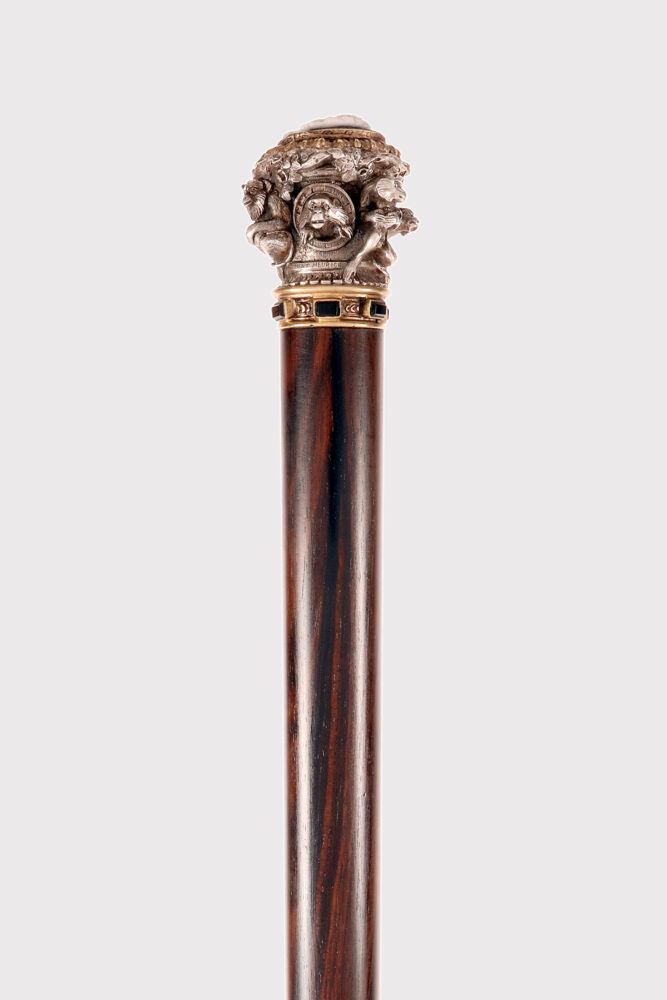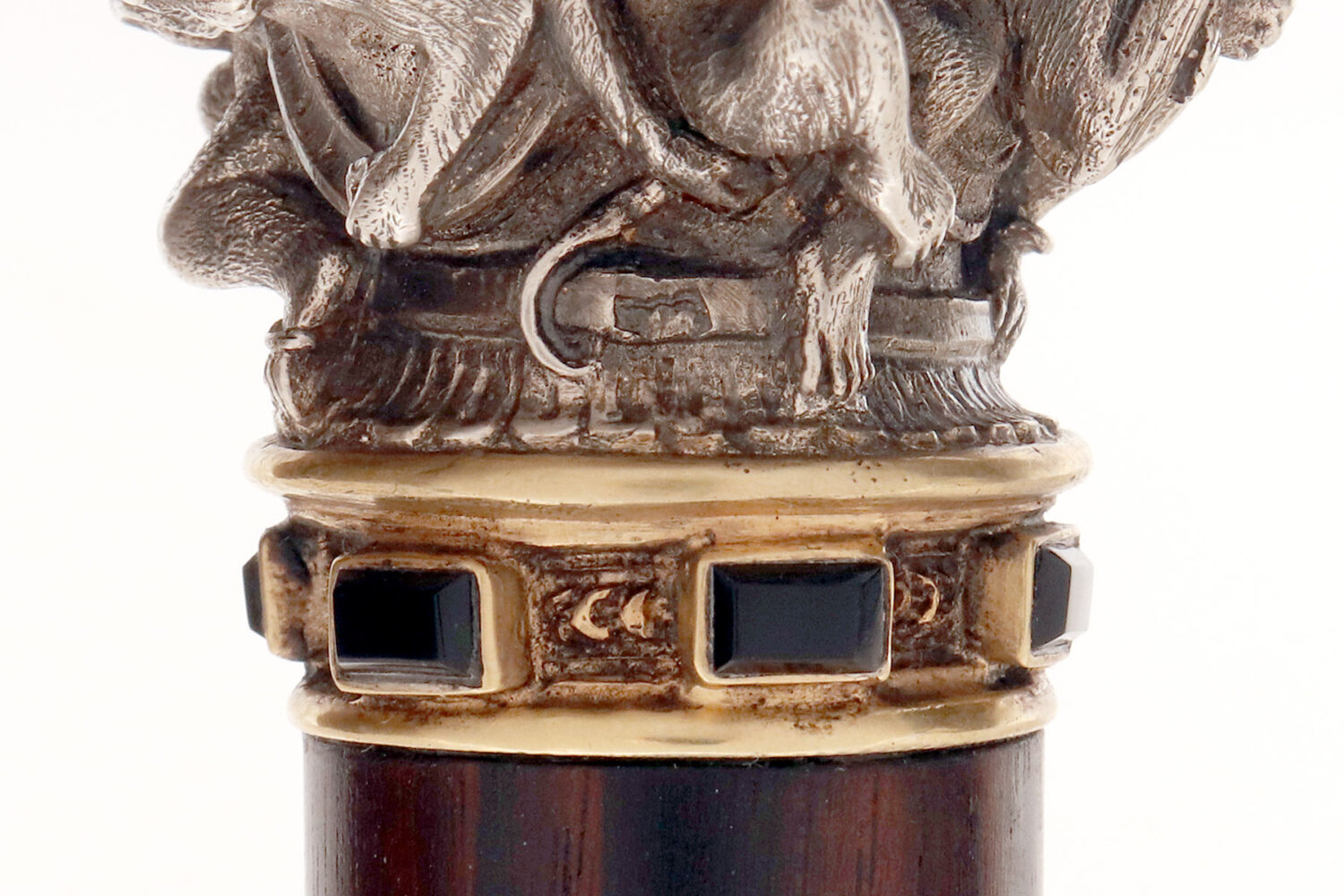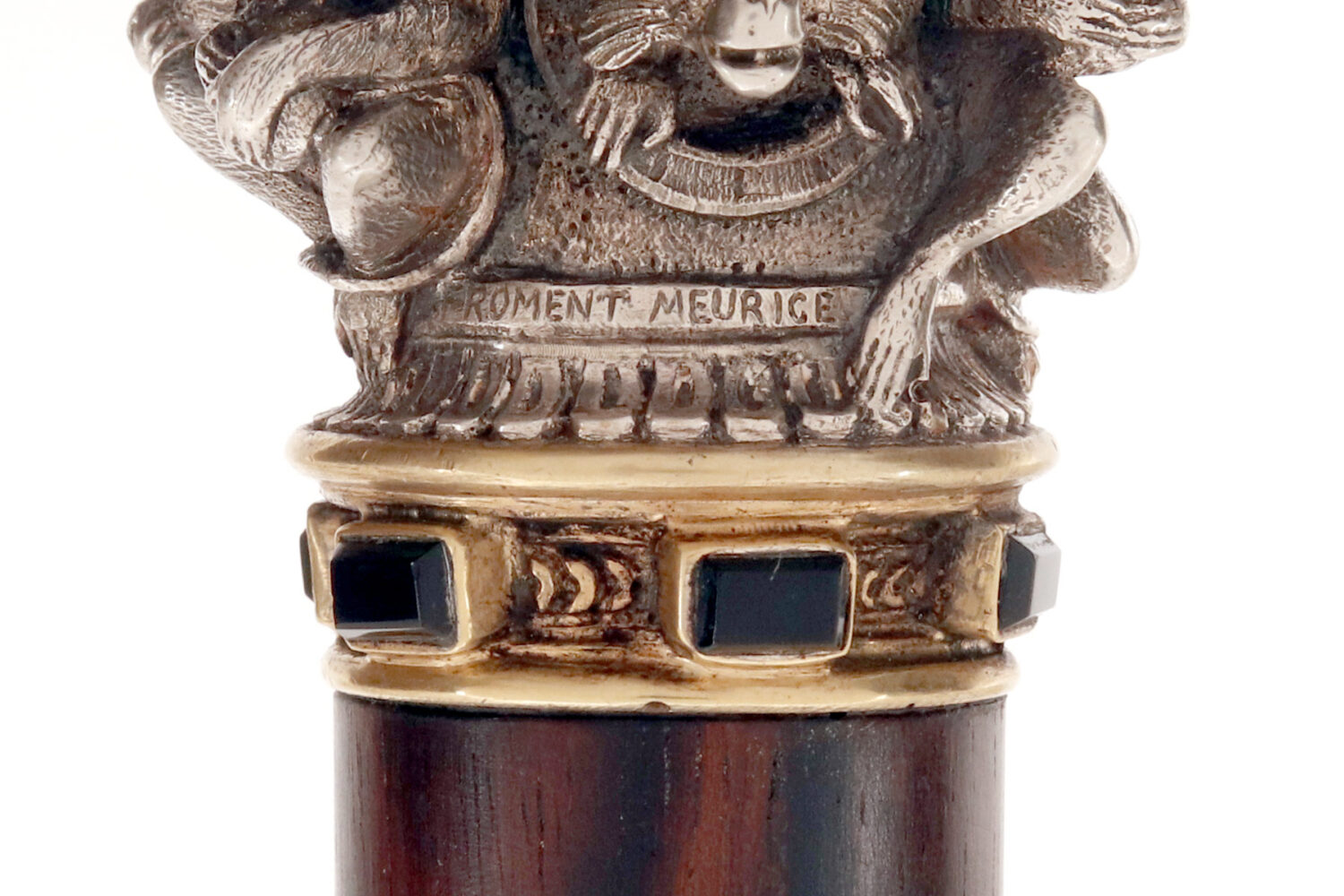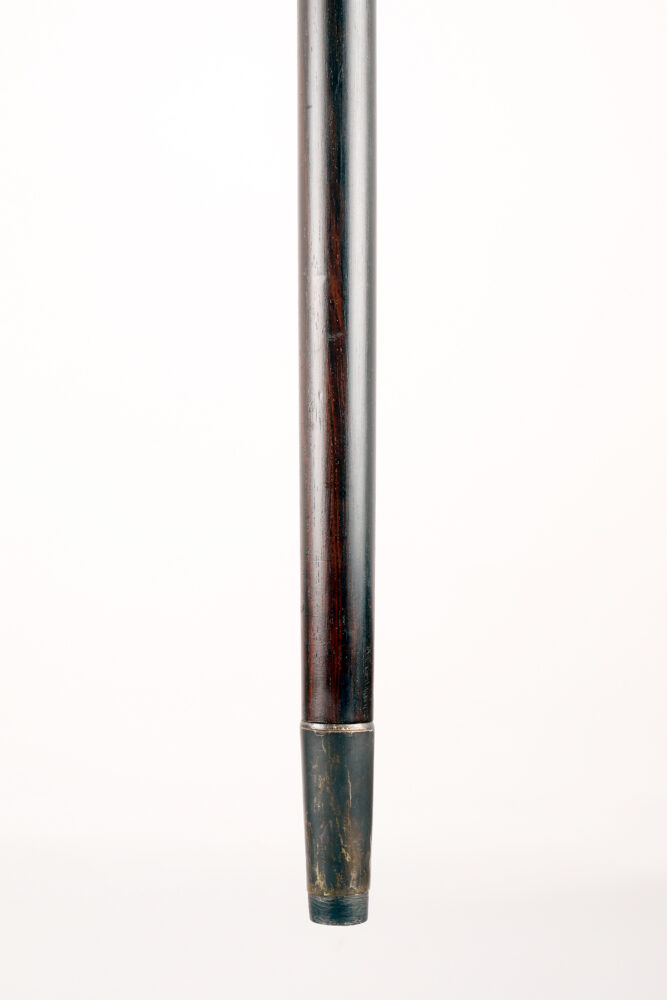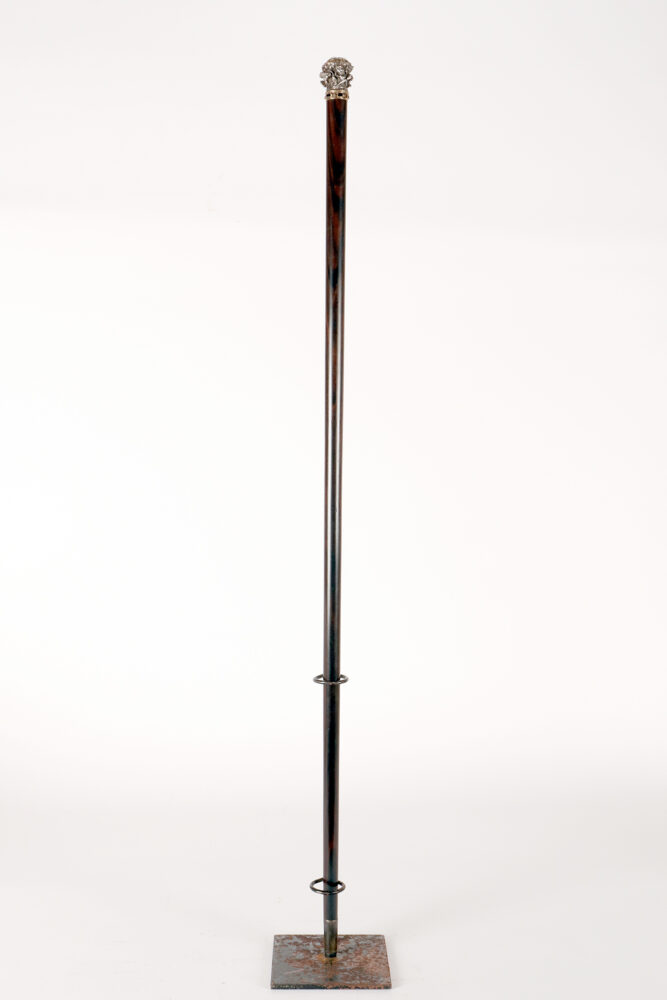Jewel walking stick, handle depicting six monkeys. Signed Froment-Meurice, Paris, France 1850.
France, circa 1850.
6500 EURO
Jeweled walking stick, made of silver, designed and executed by François-Désiré Froment-Meurice. The knob depicts six carved, crouching monkeys. The terminal has an oval-shaped cameo in two-layered agate with a white effigy on a black background, depicting the profile of a neoclassical woman’s face with gathered hair, with a string of pearls and an earring, enclosed in a gold band with finely chased laurel leaves. The lower band is set with 6 onyx stones, emerald cut. Ebony wood shaft, metal ferrule. Signed Froment-Meurice. This knob is identical to a silver version preserved in the Maison de Balzac in Paris, said to have belonged to the French novelist Honoré de Balzac, who commissioned it in 1845 from the jeweler François-Désiré Froment-Meurice. Another version in silver is known to have belonged to Auguste Vacquerie, a journalist, polymath, and close friend of Victor Hugo. This cane, with his initials, is in the Musée Victor Hugo in Paris. Froment-Meurice (1802–1855) was one of the most eminent and esteemed jewelers in France, producing much of his work in the neoclassical, neo-Renaissance, and neo-Gothic styles. In 1844, he was awarded the honorary title of official goldsmith-jeweler of the City of Paris. He was succeeded by his talented son Émile (1839–1913), who also received recognition, including, in 1869, the Legion of Honor for his participation in the Universal Exhibition of 1867. France, circa 1850.
36” – 92 CM H 1,2” – 3,7 CM L 1,5” – 3,7 CM D
REF: M6108

